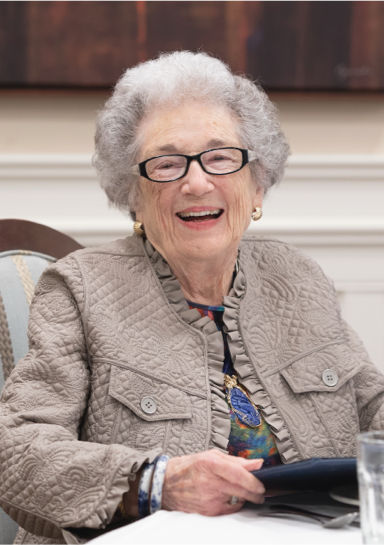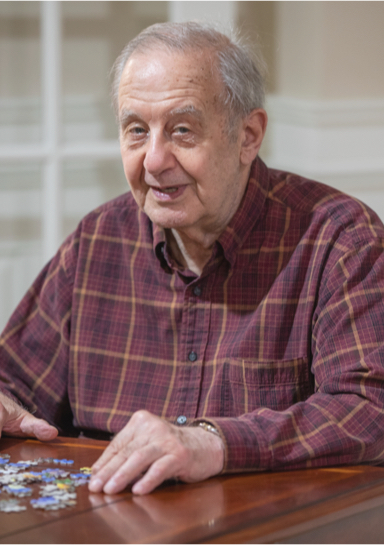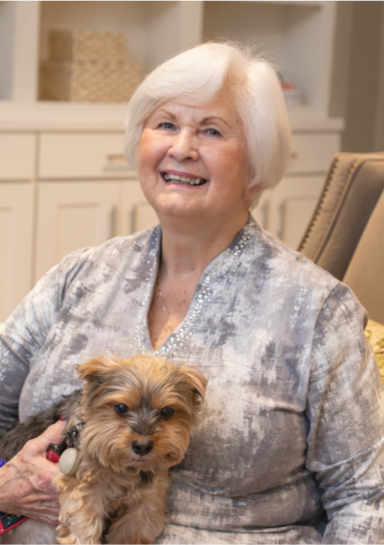Dementia often poses unique complications. It doesn’t just affect memory and behavior—it often affects communication as well. Without professional support, it can be difficult to communicate with someone with dementia. Fortunately, our team is here to help.
8 tips for talking to someone with dementia include:
- Create a comfortable environment
- Prepare for the conversation
- Practice patience
- Avoid interrupting
- Use simple language
- Be mindful of body language
- Listen actively
- Let our team help
Create A Comfortable Environment
The right setting can make any conversation smoother. Dementia often makes a person lose track of the conversation or become easily distracted. Start by minimizing distractions in the area, like:
- Remove clutter or unnecessary objects
- Maintain a comfortable temperature
- Reduce loud noises or interruptions
- Create a calm and soothing atmosphere
Think about how you can make the space more peaceful. The conversation should be about your bond, so reduce the risk of basic distractions. When your loved one feels at ease, they’re more likely to open up and engage.
Prepare For The Conversation
A little preparation goes a long way. Before starting a conversation, set yourself up for success by thinking ahead about timing and topics.
Try to:
- Choose a time of day when your loved one feels most alert.
- Focus on topics that they’re likely to enjoy like hobbies or fond memories.
- Avoid rushing into conversations when they seem overwhelmed or tired.
By preparing ahead of time, you’re creating a supportive environment where your loved one can relax.
Practice Patience
Patience can be a powerful tool during any interaction—especially when dementia is involved. Responses may come slowly, or your loved one might take time to express their thoughts. Being patient shows respect and keeps the atmosphere calm.
When conversations stall or go off track, take a deep breath and give them space. It’s okay for moments of silence to happen. Your loved one likely needs space to gather their thoughts, so give them this opportunity. Staying calm isn’t always easy, but it does make these moments much less stressful.
Avoid Interrupting
Interruptions might seem harmless, but they can make someone reluctant to keep talking. Allowing them to finish their sentences—even if it takes time—creates a more respectful space for communication.
Phrases like “take your time” or “I’m listening” can encourage them to continue. Keep your tone steady and show genuine interest in their words without rushing them along. With room to speak at their own pace, your loved one is more likely to feel valued and understood.
Use Simple Language
Clear, straightforward language can reduce misunderstandings. It may take some time to adjust your chosen words, but it makes a difference here. Dementia makes it harder to process complex ideas or lengthy sentences, so try to simplify things.
Stick to short, simple phrases when speaking. For example, instead of asking, “Can you remember where we went last weekend?” you could say, “Do you remember we visited the park?” Using familiar words avoids confusion and keeps conversations flowing smoothly.
Avoid statements with too many steps or abstract ideas. Keeping things direct makes your message accessible and easier to engage with—like your loved one deserves.
Be Mindful Of Body Language
Communication isn’t just about words—actions matter, too. Your non-verbal signals, like facial gestures and posture, often speak louder than anything you say.

Make sure your body language is warm and open. A smile or gentle nod can go a long way. It’s difficult to avoid subconscious body language, so try to pay attention to habits like:
- Crossing your arms
- Rushing your loved one with your body
- Fidgeting
- Avoiding eye contact
- Standing above them while they’re sitting
- Sharp, sudden movements
These gestures might come off as closed or impatient. Instead, try to stay near their eye level and keep your motions controlled. These non-verbal cues are a powerful way to show you care when the right words are hard to find.
Listen Actively
Active listening shows that you value what your loved one is saying, even if their words are unclear. It’s not about hearing but being present during the conversation. Active listening is a skill, and it takes practice to do it effectively, but try to:
- Allow pauses in the conversation without filling them too quickly.
- Paraphrase what they say to ensure you understand.
- Use gentle expressions like “I see” or “That sounds interesting” to encourage more sharing.
Active listening helps build confidence in communication. It reinforces your bond with your loved one and gives you a chance to connect on a deeper level. Through active listening, you can show your loved one their thoughts are worth sharing with you.
Let Our Community Help
Being there for someone with dementia takes thoughtful care. Every effort you make strengthens your connection and helps create a sense of safety for both of you.These tips can guide you, but sometimes, it helps to lean on a team that understands. So reach out to our team at RUI – Woodland Hills! Schedule a tour with us today to learn how our community can support you and your loved one in a way that makes a difference.














